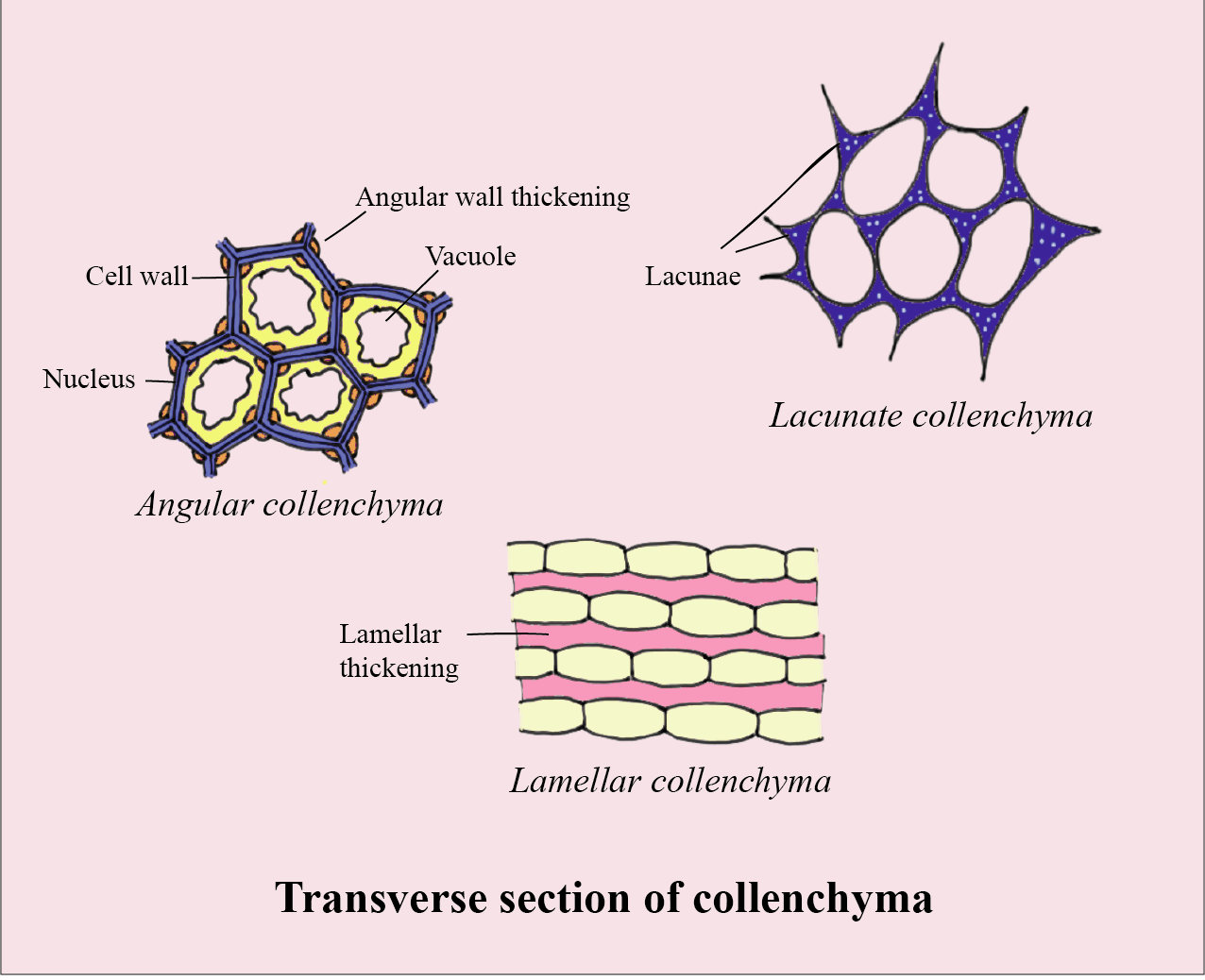
Draw the labeled diagram of the transverse section of the plant collenchyma cells.
Answer
475.5k+ views
Hint: Collenchyma cells are a part of the plant’s ground tissue system. They provide additional mechanical and structural support in particular regions and have a structure that enables this. They also provide stretchy properties to certain plants.
Complete Step by Step Answer:
Collenchyma tissue is composed of cells that are elongated with irregularly thick walls. This tissue provides structural and mechanical support, especially in the areas of growing shoots and leaves. Collenchyma tissue provides flexibility to the parts such as petioles, leaf veins, younger stems to allow for easy bending of these structures without any breakage. These tissues provide resilience to the strands in stalks of celery giving It a stretchy property.

The collenchyma cells are usually living, and have a thick primary cell wall that is made up of pectin and cellulose. The cell wall thickness is affected strongly by the mechanical stresses upon the plant.
Additional Information: There are four main types of collenchyma cells:
- Angular collenchyma that is thickened at the intercellular contact points.
- Tangential collenchyma cells that are arranged into ordered rows and thickened at the tangential cell wall face.
- Annular collenchyma that shows uniformly thickened cell walls.
- Lacunar collenchyma which is collenchyma with intercellular spaces.
The collenchyma cells are mostly found adjacent to the outer growing tissues which include the vascular cambium and these tissues are known for increasing the structural support and integrity.
Note:
- Other than the collenchyma, the ground tissues of the plants are also composed of parenchyma and sclerenchyma.
- The parenchyma cells act as the filler tissues in the softer parts of the plants as seen in the cortex, pericycle, pith, and medullary rays in the primary stem and root.
- The sclerenchyma cells are formed of thick lignified secondary walls and are often dead after maturation. They are the main structural support of the plants. They are further formed of fibers and sclereids.
Recently Updated Pages
Figure 9E22 shows a small body of mass m placed over class 11 physics CBSE

The IUPAC name of CH3CH2COCH2CH3 is A 2pentanone B class 11 chemistry CBSE

The solubility of AgBrO3 formula weight 236 is 00072g class 11 chemistry CBSE

What is the nature of urea Is it acidic basic neutral class 11 chemistry CBSE

Change in temperature of a medium changes A Frequency class 11 physics CBSE

The minimum distance between the circle x2 + y2 9 and class 11 maths CBSE

Trending doubts
How is phenol converted to salicylic acid class 11 chemistry CBSE

Why was the Vernacular Press Act passed by British class 11 social science CBSE

Arrange Water ethanol and phenol in increasing order class 11 chemistry CBSE

Name the nuclear plant located in Uttar Pradesh class 11 social science CBSE

One Metric ton is equal to kg A 10000 B 1000 C 100 class 11 physics CBSE

What steps did the French revolutionaries take to create class 11 social science CBSE




